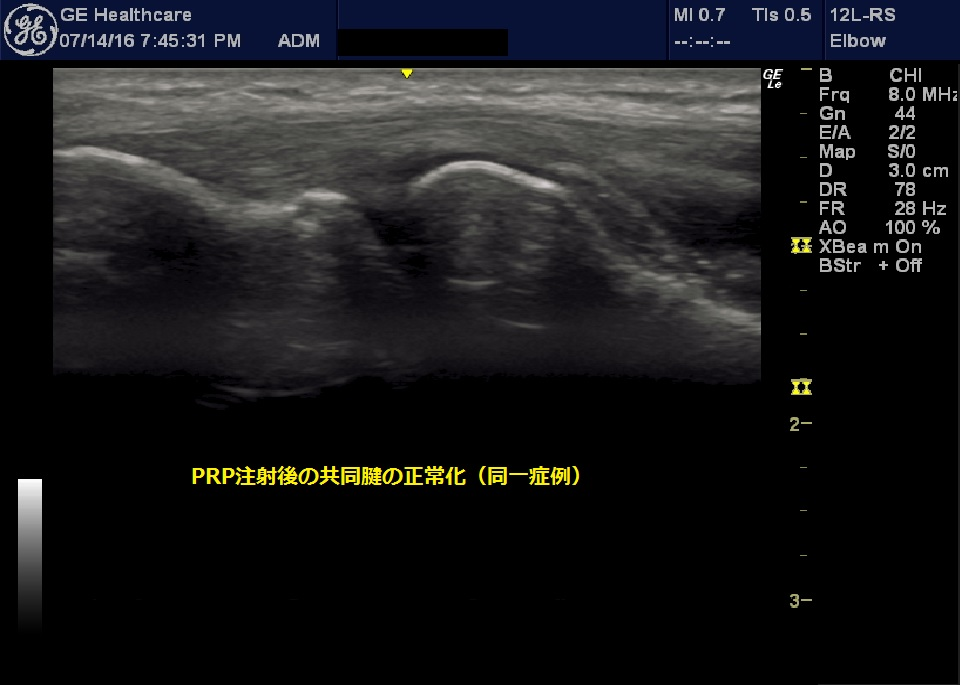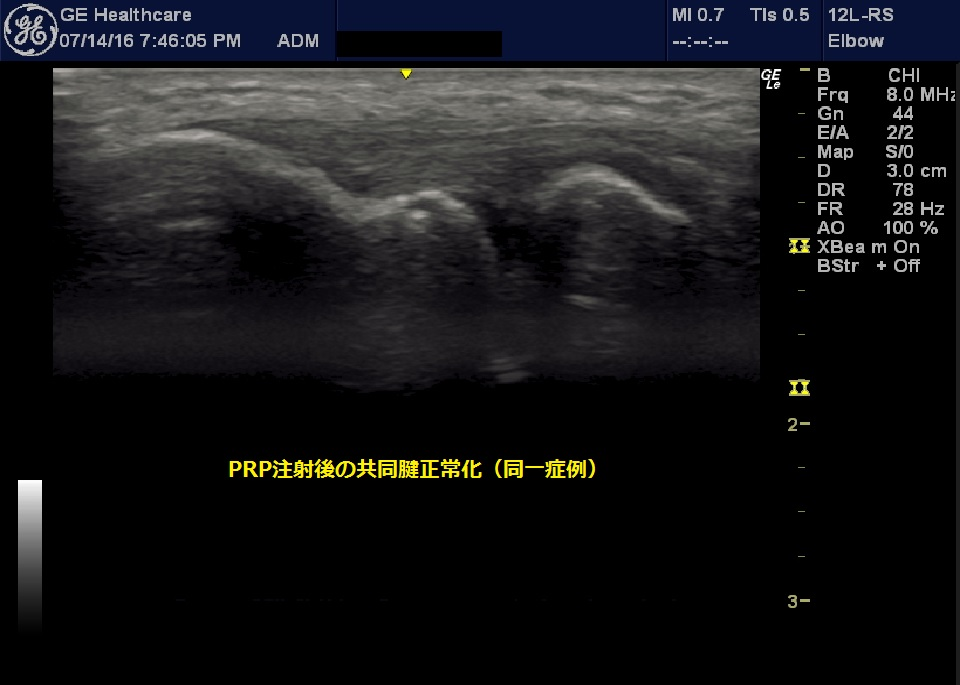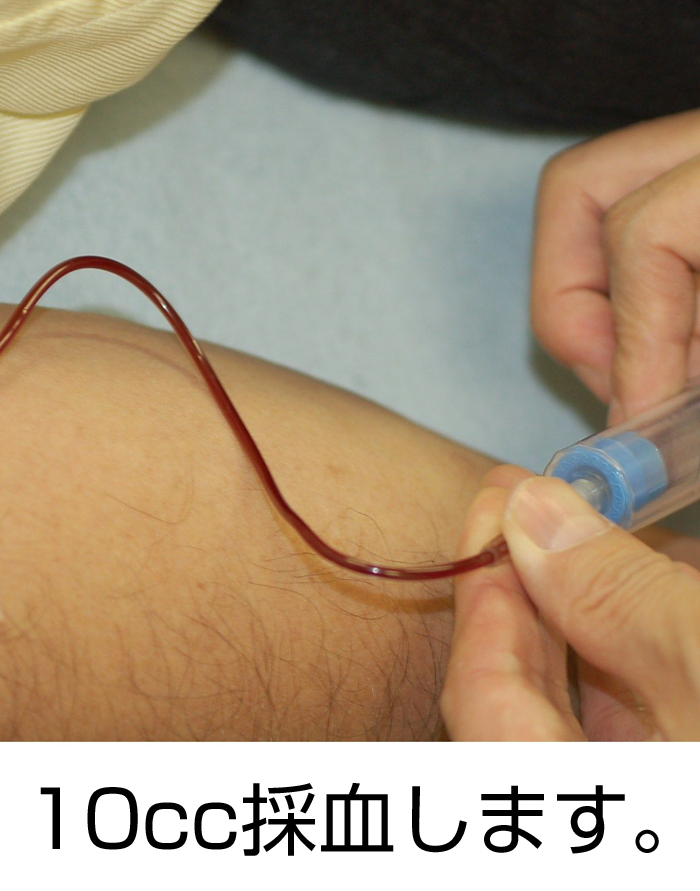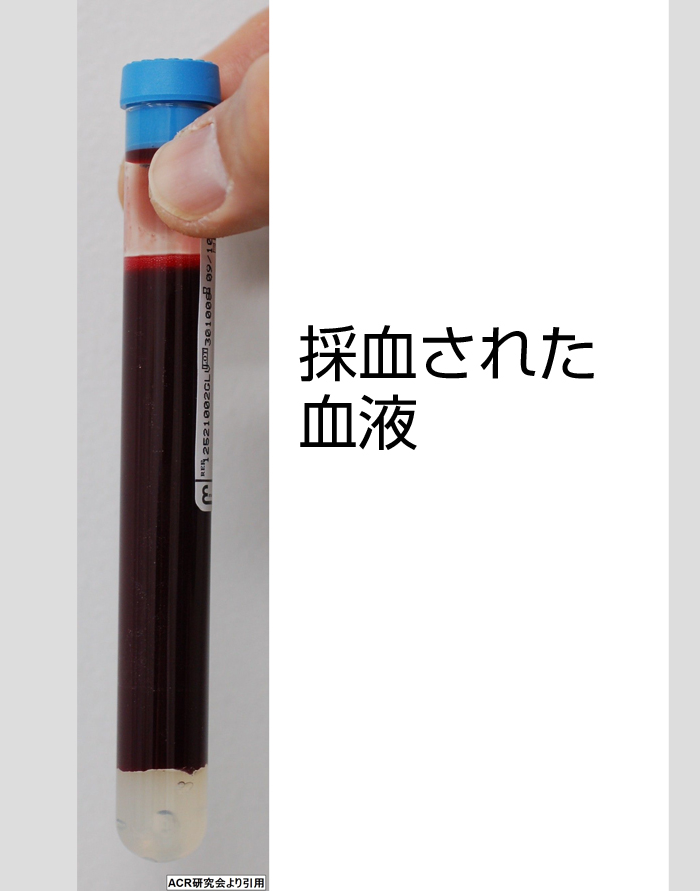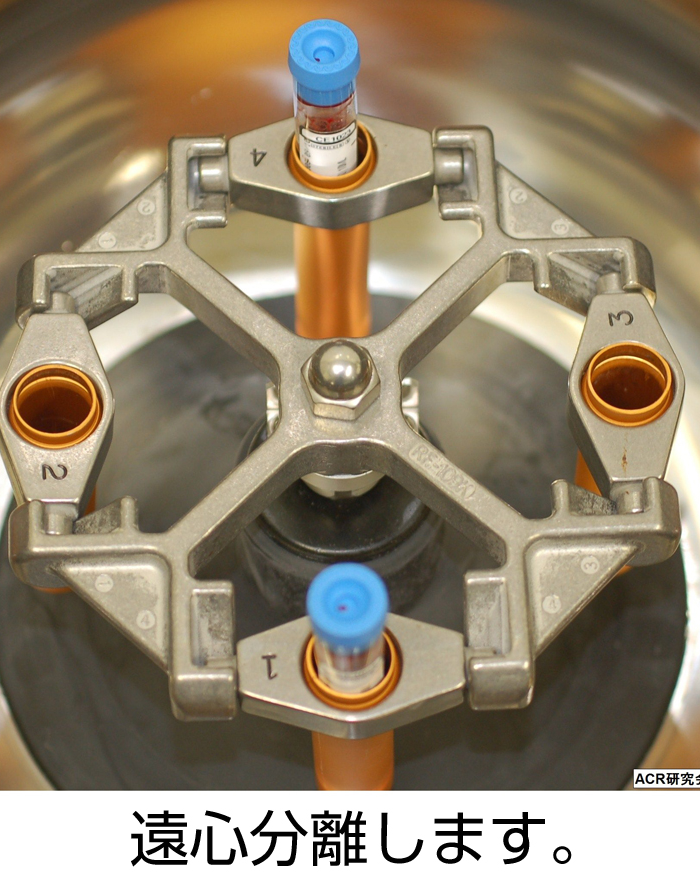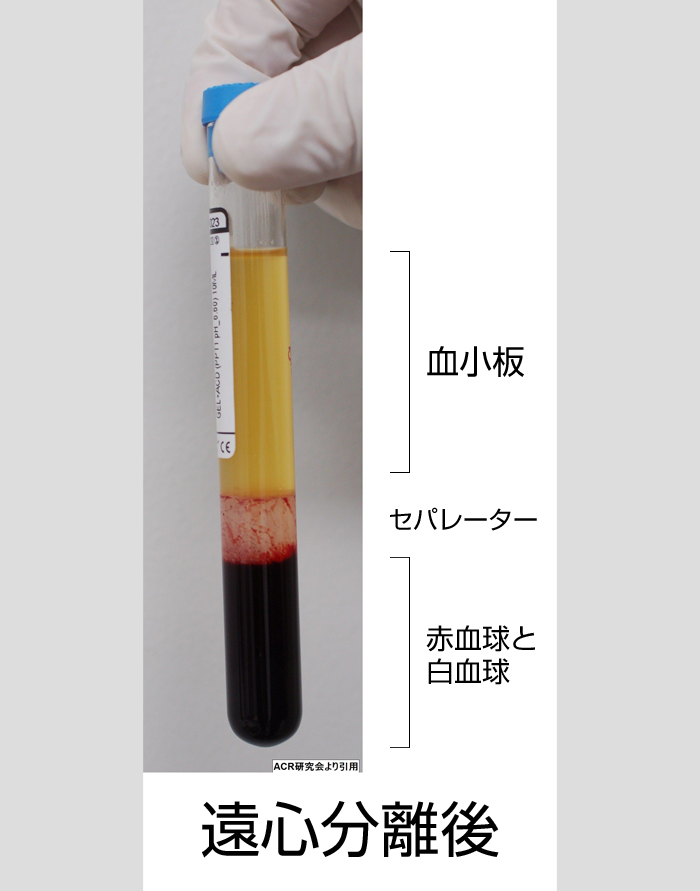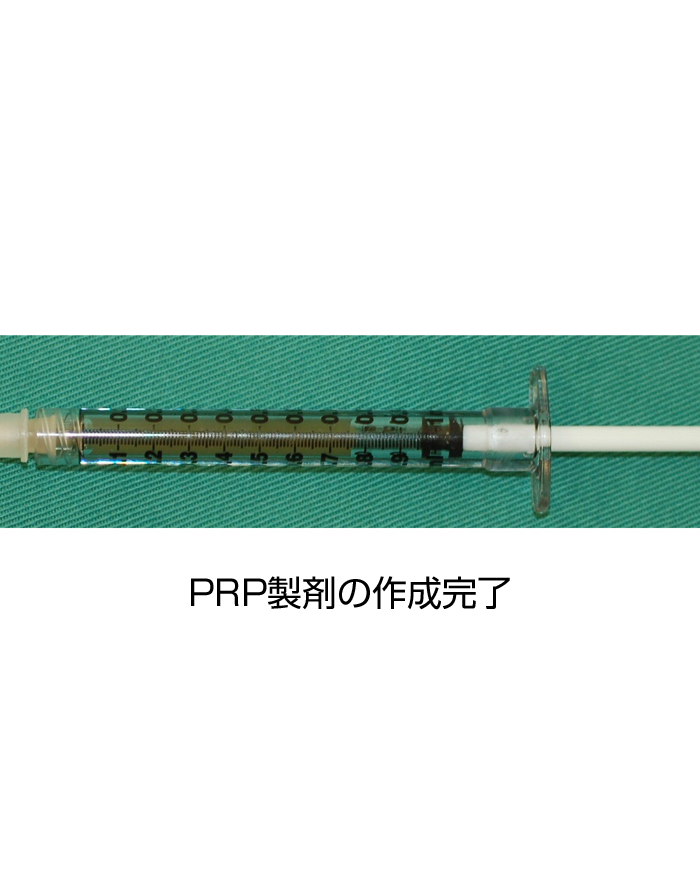PRP
Autologous platelet-rich plasma (PRP) therapy
About PRP Therapy
PRP therapy is a type of regenerative medicine that aims to promote wound healing and regeneration of aging skin by injecting platelet-rich plasma (PRP) taken from the patient's own blood. PRP therapy is characterized by its low risk of side effects because it uses platelets taken from the patient's own blood.
Subject of treatment
Accelerated healing of tennis elbow (externo epicondylitis of the humerus), chronic Achilles tendonitis, and partial rotator cuff injuries of the shoulder
PRP preparation and injection
- Approximately 10 ml of blood is collected from each dedicated blood collection tube.
- Blood is centrifuged and platelet-rich platelet plasma (PRP) is collected.
- Ultrasound equipment is used to identify the affected tendon, muscle, etc., and PRP is injected into the surrounding area in several places using an ultrafine needle.
Treatment Practices
PRP injection for tennis elbow (external epicondylitis)
The affected tendon, muscle, etc. is identified using an ultrasound device, and PRP is injected into the damaged area in several places.

当該部位を確認
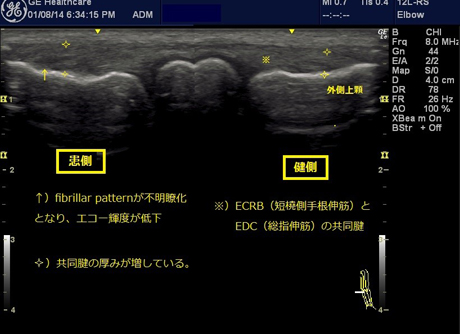
当該部位を確認
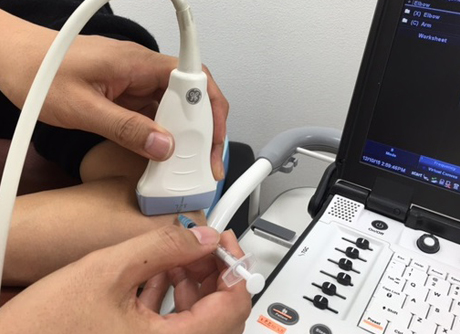
当該部位への針先進入を確認
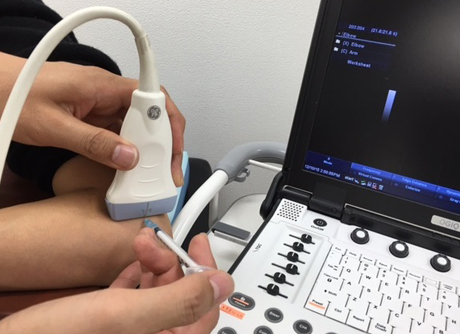
薬液を注入

PRP注入後の状態
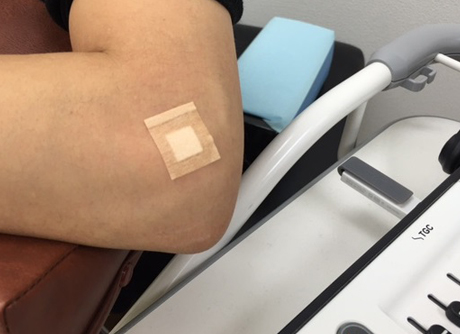
抜針後
PRP treatment for tennis elbow
Male in his 50s. Chief complaint: left elbow pain.
Diagnosis: external epicondylitis (tennis elbow).
Progress before PRP treatment: He had left elbow pain for about one year.
The pain did not improve after conservative treatment.
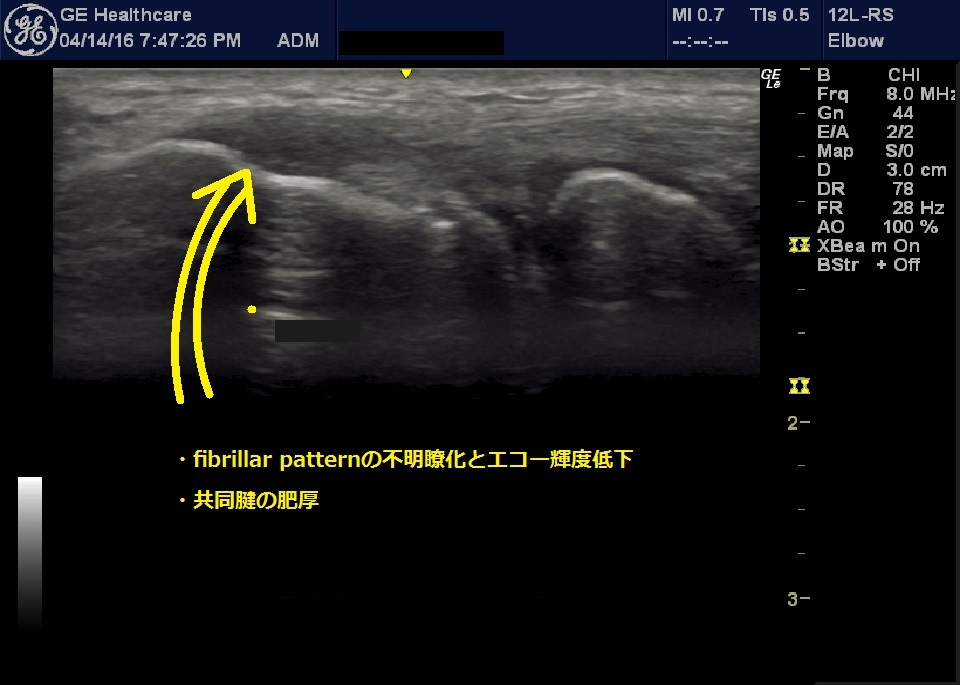
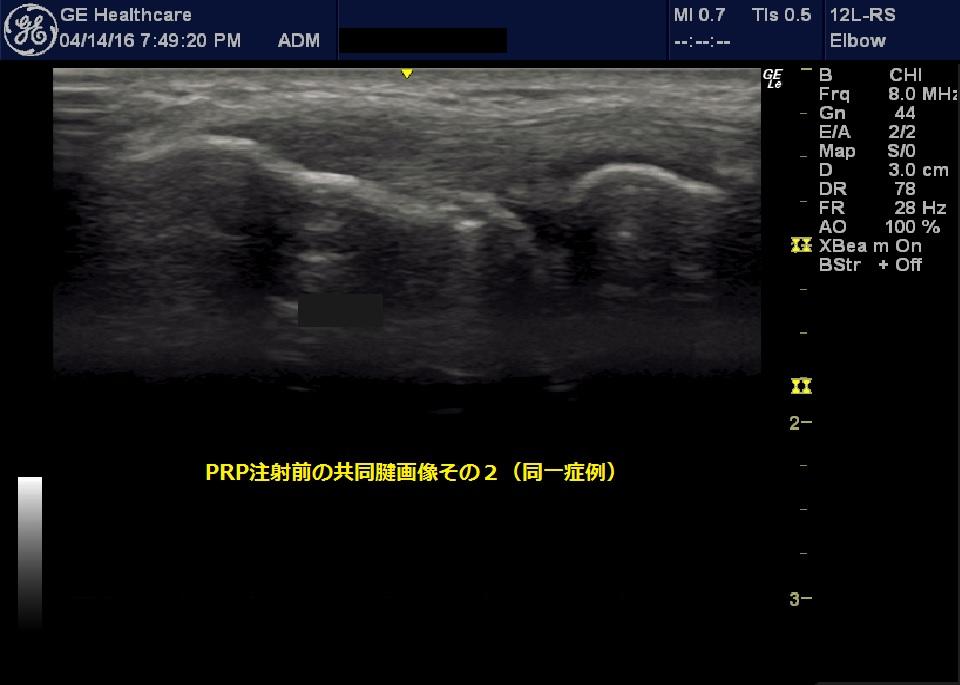
Echographic images prior to PRP treatment showed loss of fibrillar pattern, decreased brightness, and thickening of the co-tendon, typical findings of external epicondylitis.
The PRP preparation shown above was completed and injected into the affected area under echo guidance as shown in the video.
Progress after PRP treatment
At one month later, the symptoms remained unchanged and the pain remained the same.
After 2 months, the pain seemed to have decreased slightly.
At 3 months, the pain had decreased to the point where it was barely noticeable. Echo images at this time are shown below.
